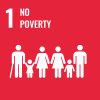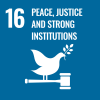
 When world leaders adopted the 2030 Agenda for Sustainable Development in 2015, they committed to a shared vision to set the world on a sustainable path for people, planet, peace, partnership and prosperity. Almost one third of the way into the journey, at the SDG Summit held in September 2019, Member States recognized that global efforts were coming up short to deliver that transformational shift by 2030 and a renewed international commitment was needed to fulfill the promise to present and future generations. The year 2020 kickstarts the Decade of Action—a reaffirmation of the global commitment through accelerated efforts and sustainable solutions to the world’s biggest challenges, ranging from eradicating poverty and reducing gender inequality to addressing climate change. Yet, in only a brief period of time, the COVID-19 pandemic has disrupted efforts to achieve the 2030 Agenda for Sustainable Development. The global community finds itself in an unprecedented situation where parallel threats of health, economic and social crises left countries struggling to contain the epidemic and provide immediate financial relief for the many people affected by the associated macroeconomic downturns. The pandemic threatens to reverse years of progress on poverty, hunger, health care and education. While the virus has impacted everyone, it is affecting the world’s poorest and most vulnerable people the most. During this period of crisis, timely and disaggregated data and statistics have proved to be critical in understanding, managing and mitigating the human, social and economic impacts of the outbreak. Financial and technical support for data and statistical systems andinnovations are urgently needed for designing the short-term responses and accelerated actions to put countries back on track to achieve the SDGs.
When world leaders adopted the 2030 Agenda for Sustainable Development in 2015, they committed to a shared vision to set the world on a sustainable path for people, planet, peace, partnership and prosperity. Almost one third of the way into the journey, at the SDG Summit held in September 2019, Member States recognized that global efforts were coming up short to deliver that transformational shift by 2030 and a renewed international commitment was needed to fulfill the promise to present and future generations. The year 2020 kickstarts the Decade of Action—a reaffirmation of the global commitment through accelerated efforts and sustainable solutions to the world’s biggest challenges, ranging from eradicating poverty and reducing gender inequality to addressing climate change. Yet, in only a brief period of time, the COVID-19 pandemic has disrupted efforts to achieve the 2030 Agenda for Sustainable Development. The global community finds itself in an unprecedented situation where parallel threats of health, economic and social crises left countries struggling to contain the epidemic and provide immediate financial relief for the many people affected by the associated macroeconomic downturns. The pandemic threatens to reverse years of progress on poverty, hunger, health care and education. While the virus has impacted everyone, it is affecting the world’s poorest and most vulnerable people the most. During this period of crisis, timely and disaggregated data and statistics have proved to be critical in understanding, managing and mitigating the human, social and economic impacts of the outbreak. Financial and technical support for data and statistical systems andinnovations are urgently needed for designing the short-term responses and accelerated actions to put countries back on track to achieve the SDGs. 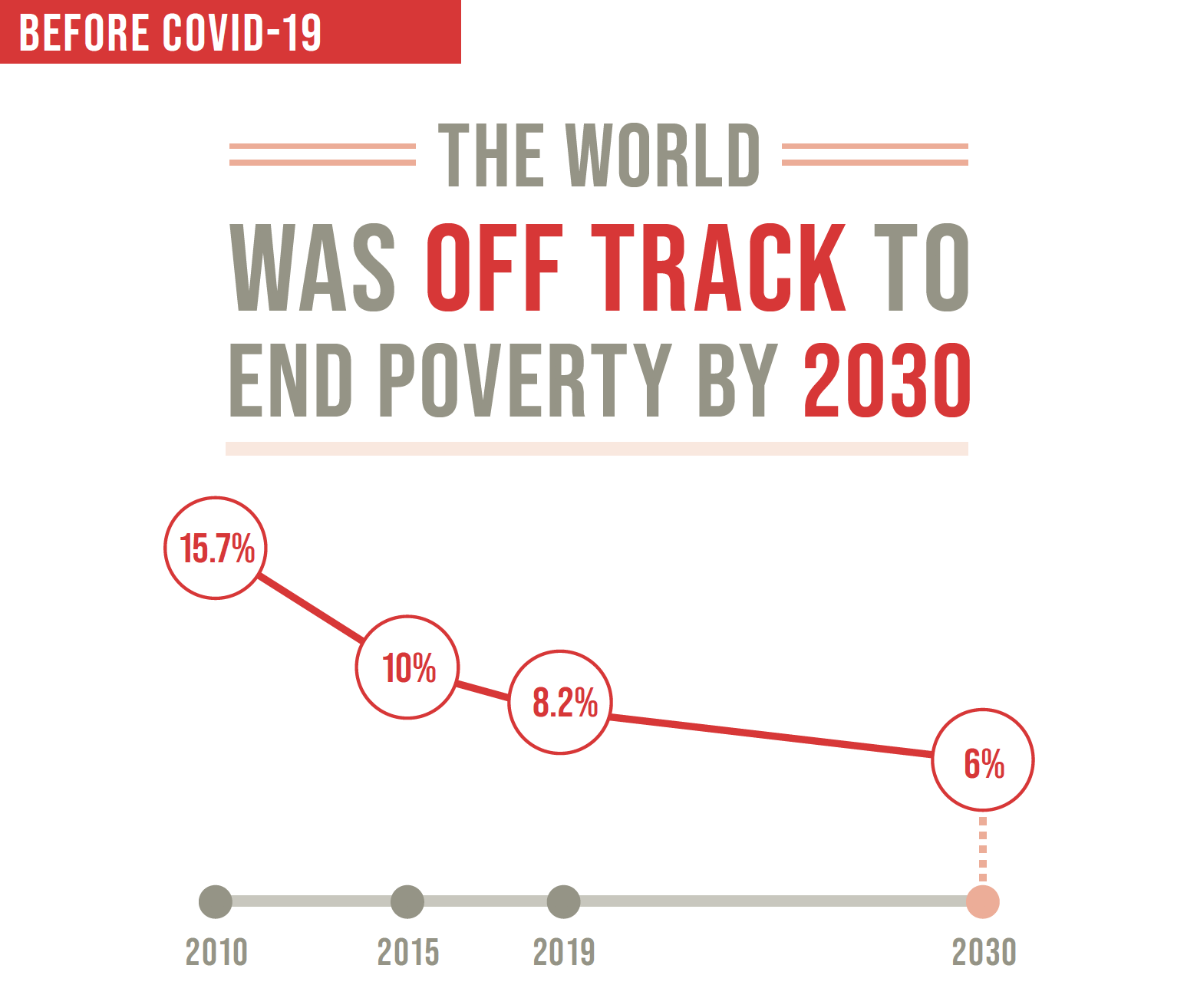
Even before the pandemic, the world was off track to fulfill the SDGs
Before the pandemic, the world had been making progress—although uneven—towards the global Goals, so that accelerated actions were still needed in most areas.
- The decline of global extreme poverty continued, but the pace had slowed down. Projections suggested that 6 per cent of the global population would still be living in extreme poverty in 2030, missing the target of ending poverty.
- The global maternal mortality ratio had declined by 38 per cent between 2000 and 2017. Still, this was less than half of the annual rate needed to achieve the global target of reducing maternal deaths to fewer than 70 per 100,000 live births by 2030. The under-5 mortality rate had fallen by almost 50 per cent between 2010 and 2018. However, progress needed to accelerate in 53 countries, two-thirds of which are in sub-Saharan Africa.
- The commitments to advancing gender equality have brought about improvements in some areas, such as fewer girls forced into early marriage and more women in leadership roles, but full gender equality remains unfulfilled.
- The proportion of the global population with access to electricity increased from 83 per cent in 2010 to 90 per cent in 2018, meaning that over 1 billion people acquired this essential service. Still, 789 million people lacked electricity in 2018.
- Countries were developing national policies to support sustainable development and signing international environmental protection agreements. For example, 79 countries and the European Union reported on at least one national policy instrument that contributed to the implementation of the 10-year Framework of Programmes on Sustainable Consumption and Production in the last two years.
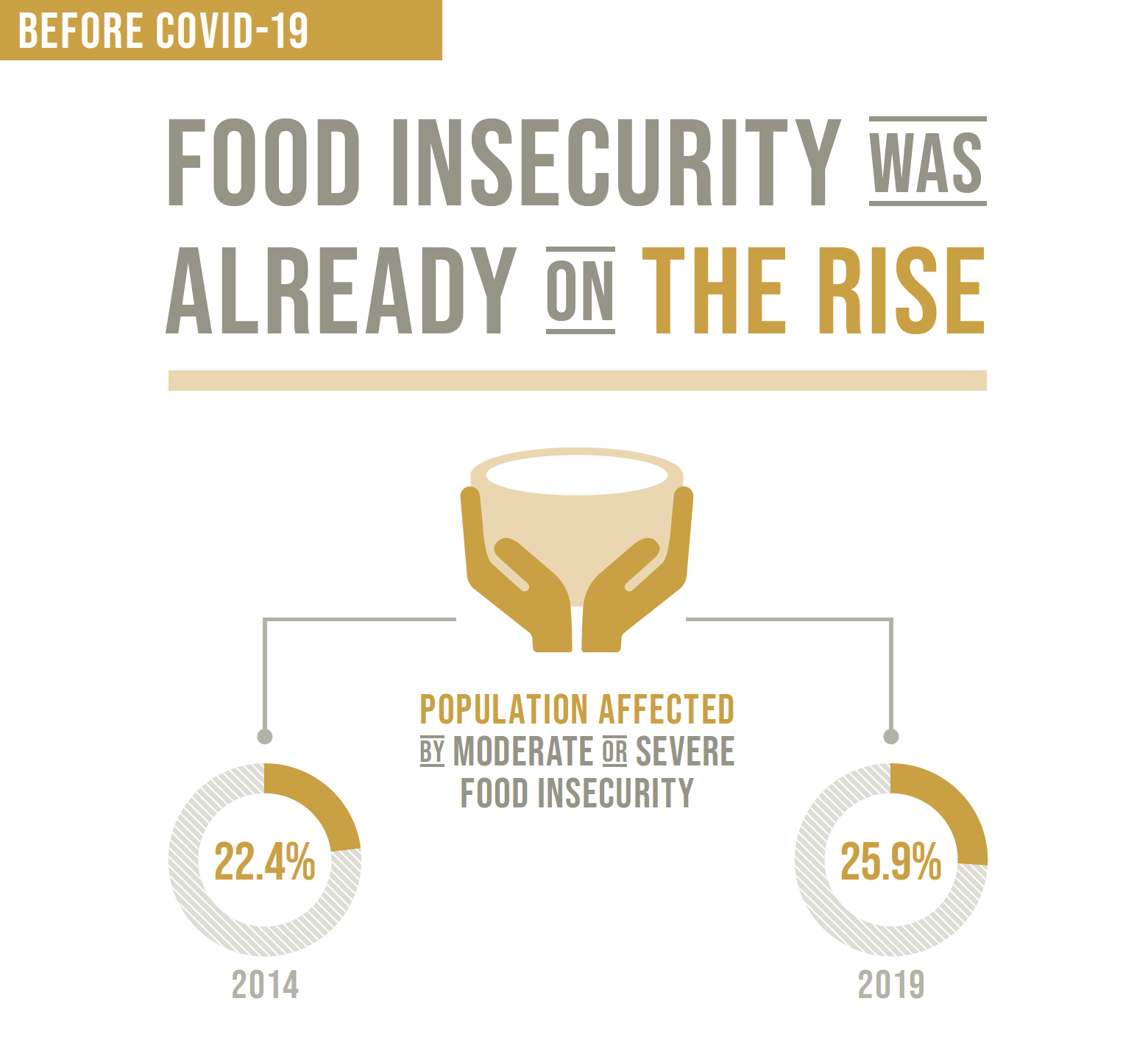 However, progress had either stalled or been reversed in other areas before the onset of the COVID-19 pandemic:
However, progress had either stalled or been reversed in other areas before the onset of the COVID-19 pandemic:
- The number of persons suffering from hunger and food insecurity was on the rise. Almost 690 million people were undernourished in 2019, up by nearly 60 million from 2014. About 2 billion people were affected by moderate or severe food insecurity in 2019.
- Climate change was occurring much more quickly than anticipated. The year 2019 was the second warmest on record and the end of the warmest decade of 2010 to 2019, bringing with it massive wildfires, hurricanes, droughts, floods and other climate disasters across continents. Global temperatures were on track to rise as much as 3.2°C above pre-industrial levels by the end of the century.
- The environment was deteriorating: consumption and production patterns were not sustainable; oceans suffered from unsustainable depletion, environmental deterioration, CO2 saturation and acidification; forest areas continued to decline at an alarming rate; protected areas were not concentrated in sites known for their biological diversity, and species remained threatened with extinction.
- Inequality continued to increase within and among countries. Young workers were twice as likely to live in extreme poverty than adult workers and 85 per cent of people without access to electricity lived in rural areas. Three quarters of stunted children lived in just two regions: Southern Asia (39 per cent) and sub-Saharan Africa (36 per cent).
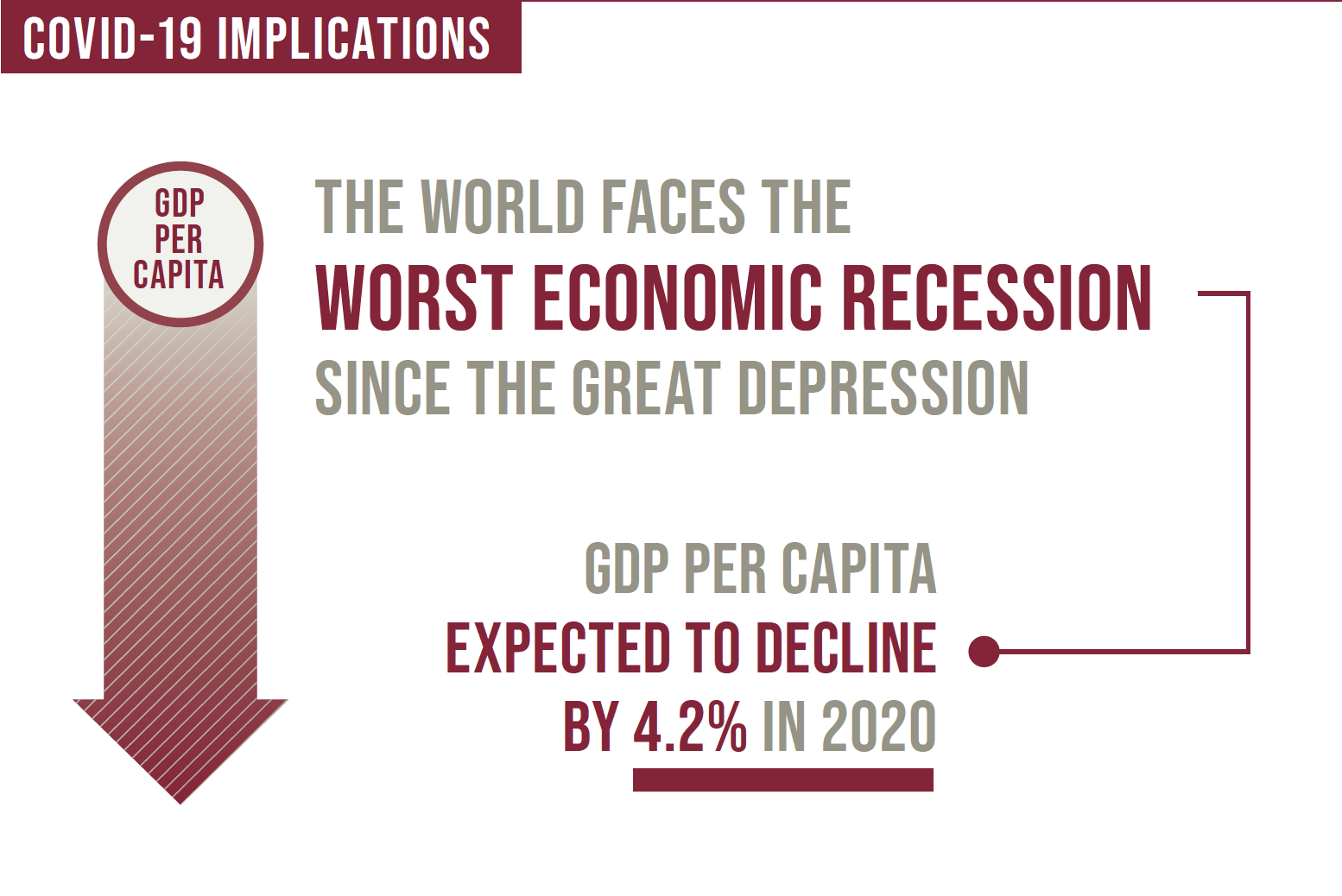 COVID-19 threatens to reverse progress on the global Goals
COVID-19 threatens to reverse progress on the global Goals
Amid the unravelling COVID-19 crisis, the global community finds itself facing unprecedented challenges, as the pandemic is changing the world as we know it. The pandemic abruptly disrupted implementation towards many of the SDGs and, in some cases, turned back years of progress. The crisis has touched all segments of the population, all sectors of the economy, and all regions of the world. Had the world been on track to achieve the 2030 Agenda, it would have also been better prepared to deal with the pandemic. The effects of the pandemic and the measures taken to mitigate its impact, have overwhelmed health systems globally; kept up to 90 per cent of students out of school; caused businesses and factories to shut down; disrupted global value chains and the supply of products; and is expected to push 71 million people back into extreme poverty and cause 132 million more people to suffer from undernourishment in 2020. In 2020, the world faces the worst economic recession since the Great Depression with a 4.2 per cent expected decline in real GDP per capita. World trade is expected to plunge by 13 to 32 per cent. The most vulnerable countries will be far worse off. It is estimated that foreign direct investment could decline by up to 40 per cent and remittances to low– and middle-income countries are likely to fall by 20 per cent in 2020.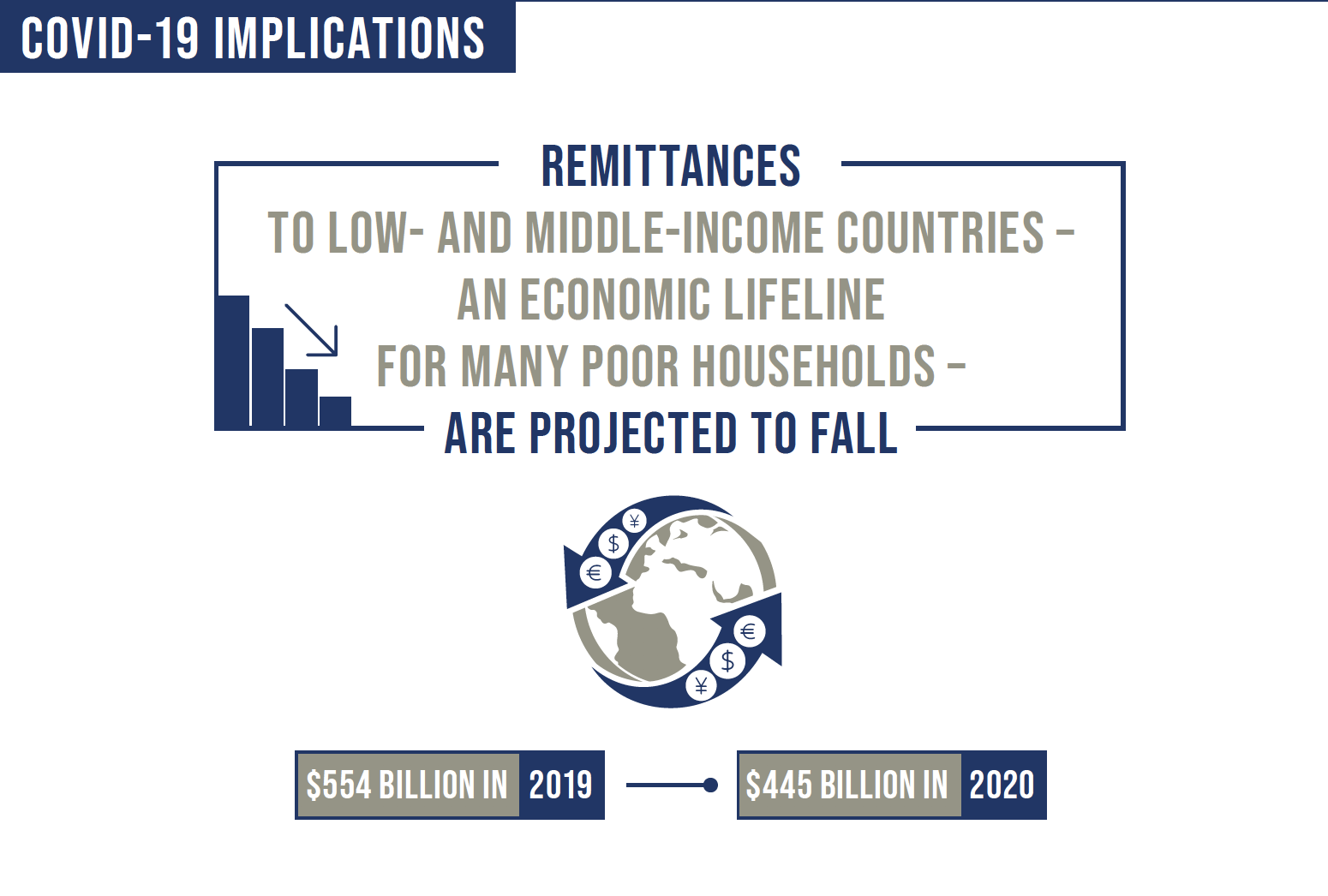 COVID-19 may have caused the equivalent of 400 million job losses globally in the second quarter of 2020. People are unable or afraid to go to health-care facilities to seek services such as checkups, vaccinations and even urgent medical care due to disruption of essential health services and lifesaving interventions. This is expected to have led to a spike in illness and deaths from communicable and non-communicable diseases.
COVID-19 may have caused the equivalent of 400 million job losses globally in the second quarter of 2020. People are unable or afraid to go to health-care facilities to seek services such as checkups, vaccinations and even urgent medical care due to disruption of essential health services and lifesaving interventions. This is expected to have led to a spike in illness and deaths from communicable and non-communicable diseases.
Impacts of COVID-19 disproportionally affect the poor and the vulnerable
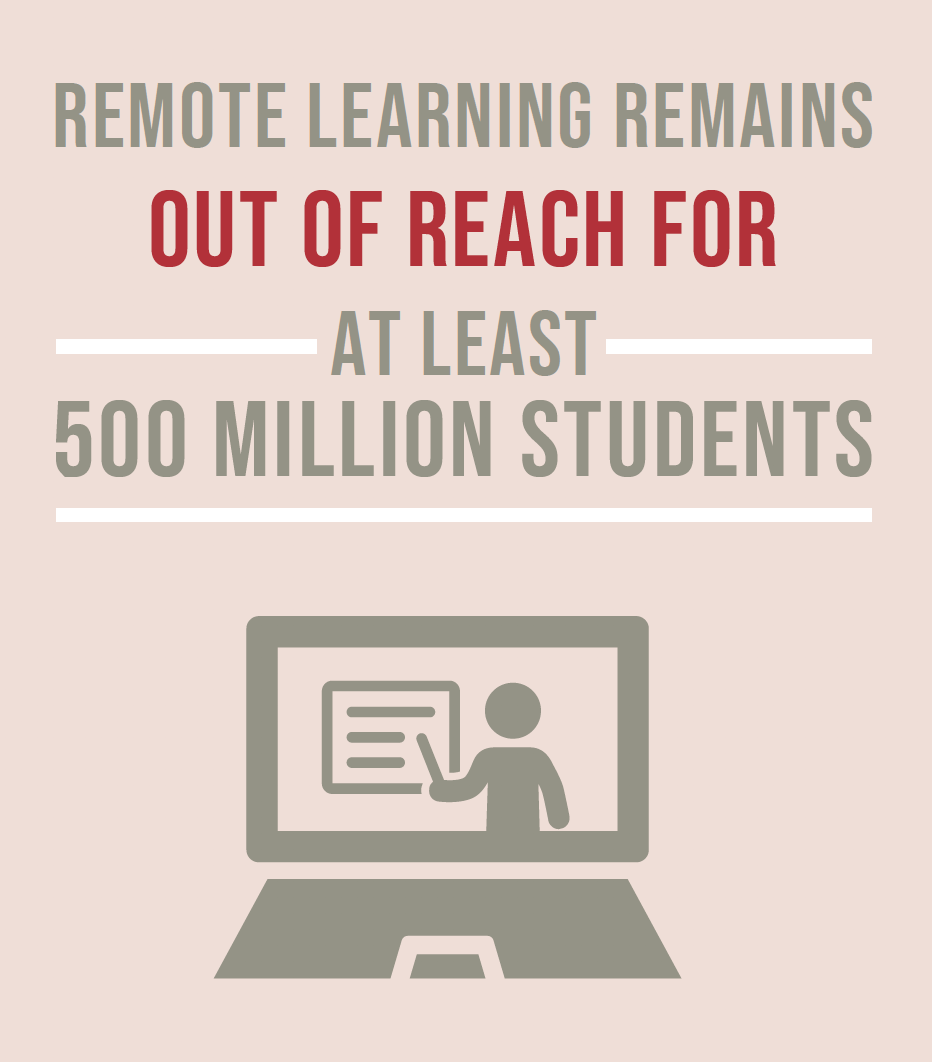 The pandemic is affecting the world’s poorest and most vulnerable people the most. It has exposed harsh and profound inequalities in our societies and is further exacerbating existing disparities within and among countries. In advanced economies, fatality rates have been highest among some vulnerable groups, such as older persons, and in developing countries, the most vulnerable—including older persons, persons with disabilities, indigenous people, children, migrants and refugees—risk being hit even harder. Due to unemployment and underemployment caused by the COVID-19 crisis, some 1.6 billion workers in the informal economy – half of the global workforce – may be significantly affected. The income of informal workers worldwide was estimated to have dropped by 60 per cent in the first month of the crisis, and up to 81 per cent in some regions. The crisis has also significantly increased the vulnerability of the world’s one billion slum dwellers, who have already suffered from inadequate housing and limited or no access to basic infrastructure and services. Women and children are also bearing the brunt of the crisis. Many women are facing increased economic insecurity. The crisis is creating circumstances that have already contributed to a surge in reports of violence against women and girls. Cases of domestic violence have increased by 30 per cent in some countries. Millions of unintended pregnancies can be expected as tens of millions of women are unable to access family planning supplies and services. Moreover, women—who already bear a disproportionate burden of unpaid care work —take on much of the additional care work due to the closure of schools and day-care centres. Being on the front lines in fighting the coronavirus also puts women at greater risk as they account for nearly 70 per cent of health and social workers globally.
The pandemic is affecting the world’s poorest and most vulnerable people the most. It has exposed harsh and profound inequalities in our societies and is further exacerbating existing disparities within and among countries. In advanced economies, fatality rates have been highest among some vulnerable groups, such as older persons, and in developing countries, the most vulnerable—including older persons, persons with disabilities, indigenous people, children, migrants and refugees—risk being hit even harder. Due to unemployment and underemployment caused by the COVID-19 crisis, some 1.6 billion workers in the informal economy – half of the global workforce – may be significantly affected. The income of informal workers worldwide was estimated to have dropped by 60 per cent in the first month of the crisis, and up to 81 per cent in some regions. The crisis has also significantly increased the vulnerability of the world’s one billion slum dwellers, who have already suffered from inadequate housing and limited or no access to basic infrastructure and services. Women and children are also bearing the brunt of the crisis. Many women are facing increased economic insecurity. The crisis is creating circumstances that have already contributed to a surge in reports of violence against women and girls. Cases of domestic violence have increased by 30 per cent in some countries. Millions of unintended pregnancies can be expected as tens of millions of women are unable to access family planning supplies and services. Moreover, women—who already bear a disproportionate burden of unpaid care work —take on much of the additional care work due to the closure of schools and day-care centres. Being on the front lines in fighting the coronavirus also puts women at greater risk as they account for nearly 70 per cent of health and social workers globally. 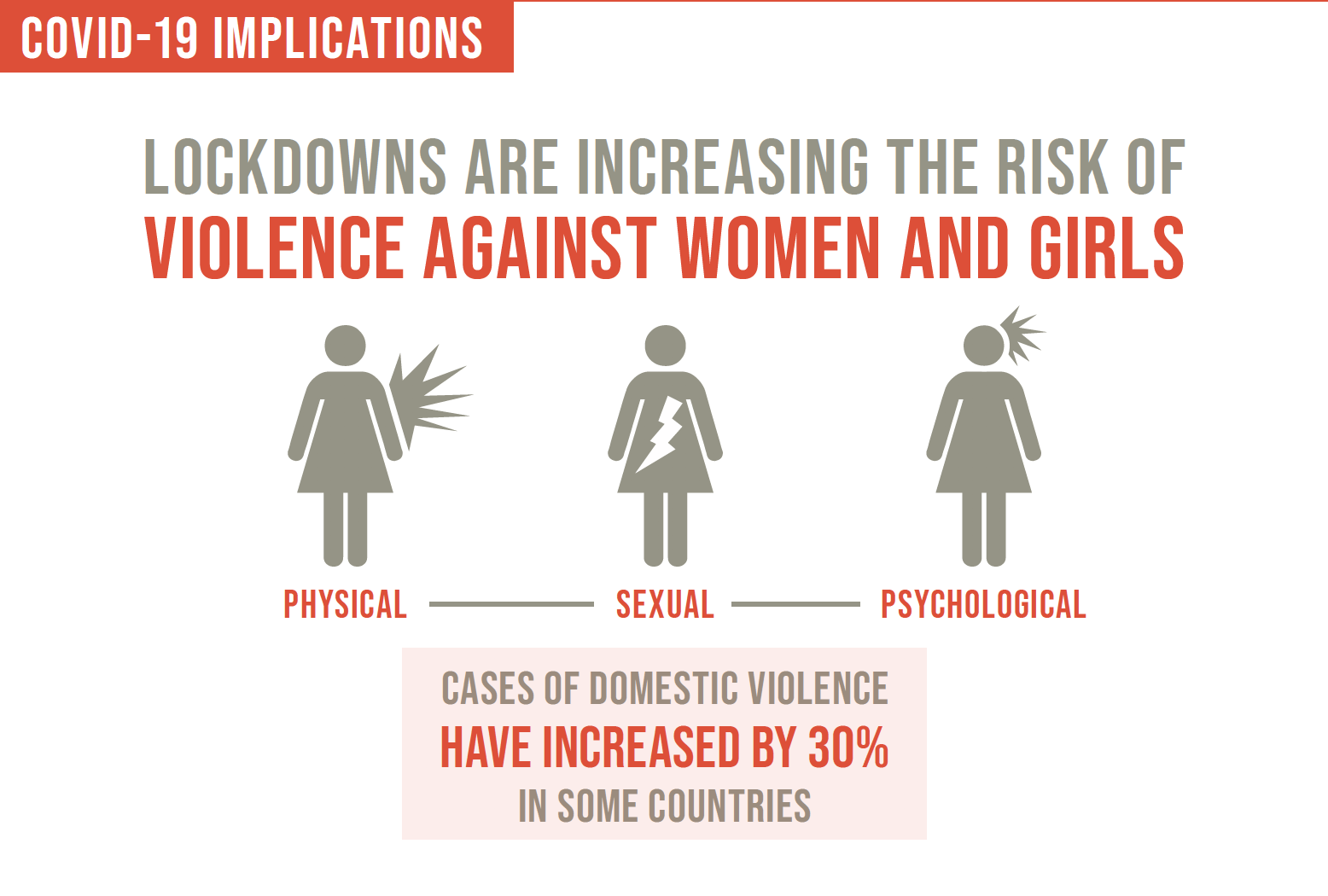 Disrupted health care and limited access to food and nutrition services could result in hundreds of thousands of additional under-5 deaths and tens of thousands of additional maternal deaths in 2020. Around 370 million children missed out on school meals due to school closures this spring and 70 countries reported moderate-to-severe disruptions or a total suspension of childhood vaccination services during March and April 2020. Prolonged absence from school results in lower retention and graduation rates and worsens learning outcomes. It also has an adverse effect on the social and behavioural development of children and youth. As more families fall into extreme poverty, children in poor and disadvantaged communities are at much greater risk of child labour, child marriage and child trafficking. In fact, the global gains in reducing child labour are likely to be reversed for the first time in 20 years. In short, the crisis is having life-altering consequences for millions of children and youth worldwide.
Disrupted health care and limited access to food and nutrition services could result in hundreds of thousands of additional under-5 deaths and tens of thousands of additional maternal deaths in 2020. Around 370 million children missed out on school meals due to school closures this spring and 70 countries reported moderate-to-severe disruptions or a total suspension of childhood vaccination services during March and April 2020. Prolonged absence from school results in lower retention and graduation rates and worsens learning outcomes. It also has an adverse effect on the social and behavioural development of children and youth. As more families fall into extreme poverty, children in poor and disadvantaged communities are at much greater risk of child labour, child marriage and child trafficking. In fact, the global gains in reducing child labour are likely to be reversed for the first time in 20 years. In short, the crisis is having life-altering consequences for millions of children and youth worldwide.
Investing in data is critical to build back better and to accelerate implementation of the SDGs
The pandemic has shown us that getting the data right can guide the policy responses to the crisis at every step from response to recovery, with life and death implications. As of the middle of August, the number of confirmed cases has reached around 21 million and the death toll over 760,000. Good data on cases and deaths have been a critical tool for governments to contain and manage the pandemic. Data have also helped understand the underlying drivers of the disease, who is most at risk and how we can prevent or be better prepared for the next crisis or disaster. And data on the social and economic impact have been essential to develop support programmes to reach those in need and start planning for a recovery that leads to a safer, more equal, inclusive and sustainable world for all. However, in many countries, even the most basic health, social and economic data are often absent. In addition, the most vulnerable populations who need help the most remain invisible. Reducing the risk of future disasters and getting closer to achieving the Goals will require leadership, foresight, innovation, finance and collaboration among all governments and all stakeholders; but all these will not be possible without data. An analysis of the data availability for Global SDG Indicators reveals that for 4 of the 17 Goals (Goals 5, 12, 13 and 14), less than half of the countries have internationally comparable data. This lack of country-level data is particularly worrisome for Goal 5 (gender equality), where on average only about 4 in 10 countries have data available. What’s more, even countries with available data have only a small number of observations over time, making it difficult for policymakers to monitor progress and identify trends. In addition, many SDG indicators are available only with a significant time lag. For instance, in at least half of countries, the latest data point available for poverty-related indicators (Goal 1) is for 2016 or earlier, on average. A similar situation is found for indicators on gender equality (Goal 5), sustainable cities (Goal 11), and peace, justice, and strong institutions (Goal 16). Amid increasing recognition of the importance of data, the crisis is disrupting routine operations throughout global statistical and data systems. A recent survey conducted by the United Nations and the World Bank shows that 96 per cent of National Statistical Offices have partially or fully stopped face-to-face data collection. Nine in ten national statistical offices in low – and lower-middle-income countries have had difficulties operating because of funding constraints, with more than half having had funding cuts. In fact, 61 per cent of those expressed the need for external support in addressing challenges associated with COVID-19. If these needs are not filled, they will have a lasting effect on countries’ ability to produce timely and disaggregated data for a large number of SDG indicators, not only creating a massive setback in our ability to support evidence-based policies for the implementation of the SDGs, but also exacerbating global data inequalities. Around the world, statisticians have been working at warp speed to set up mechanisms to ensure operational continuity by adapting and innovating data production methods and processes to deliver the much-needed data. These initiatives need to be scaled up if we are to fully inform policy responses to the crisis and support SDG acceleration efforts over the coming decade. Therefore, immediate financial and technical support for national statistical systems is urgently needed over the short term to ensure continuation of statistical operations for COVID-19 response efforts and recovery strategies. In the medium and long term, mobilization of international and domestic resources to increase investments in national data and statistical systems will be imperative if we are to build back better from the crisis and to accelerate implementation of the SDGs. New partnerships to increase the use of new data sources and technologies, with National Statistical Offices at the centre, will need to be forged, including between public producers of data and private sector, academia and other parts of civil society. The integration of geospatial information and statistical data will be particularly important. National Statistical Offices are emerging in their new role of data stewards, moving from being only producers of statistics to service providers that facilitate a joined-up approach to data and statistics across different data and statistics communities and provide governance and safeguards for the use of data. The time is now to invest in data and innovation to respond to the crisis and support SDG acceleration!
Finding transformative pathways to build back better
While the crisis is threatening progress towards the SDGs, it also makes their achievement all the more urgent. Achieving the SDGs is critical to preparedness for future pandemics and other shocks. A truly transformative recovery from COVID-19 must be pursued. One that reduces the risk of future crises and equips us to meet the goals of the 2030 Agenda and the Paris Agreement on climate change. The principles on which the SDGs were established are key to building back better in the post-COVID-19 recovery. The continued pursuit of these universal Goals will keep Governments focused not only on growth, but also on inclusion, equity and sustainability. Governments and businesses should heed the lessons learned from this wake-up call to formulate the kinds of transitions needed to build a healthier, more resilient and more sustainable world. Only through multi-stakeholder and multilateral cooperation can we forge the transformative pathways needed to create a more livable world.
 Welcome to the United Nations
Welcome to the United Nations
